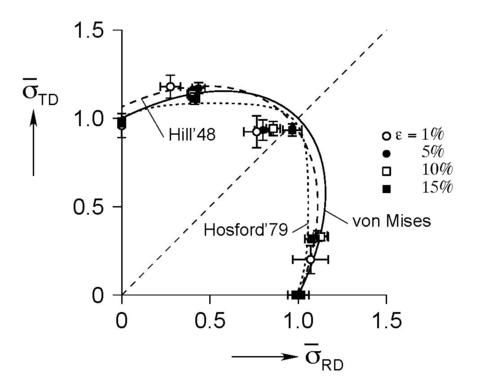Summary
In order to calculate the stresses that develop within a formed part, and thereby compensate for such things as elastic springback, it is necessary for the modeler to be able to relate an accumulated strain state to a stress state. This requires a robust constitutive law. However, multiaxial constitutive data has been lacking, and there is a need to develop robust, standard tests for its generation. This project has developed a novel technique for measuring multiaxial stress strain data along linear and non-linear strain paths.
Description

The overarching philosophy for this project is to develop standard tests that produce clean multiaxial yield data for sheet metal that will be of use to the automotive industry in lightweighting efforts. To this end, it is required that the sheet being tested remain in the as-received condition (no thinning of the gauge area, for example), and that the tests work for as wide a range of materials as possible.
The first novel test developed is based on a modified Marciniak geometry, where a sheet sample is stretched multiaxially over a circular punch with a recessed center backed by a driver sheet. In this manner, the center of the sample is forced into the plastic strain regime without frictional contact with the die. The strain state can be varied by changing the width of the sheet sample from uniaxial through plane strain to balanced biaxial tension. Thus, the tensile quadrant of the planar principal stress space can be mapped. This configuration allowed for measurements from initial yield through ultimate strains along relatively linear paths. Bi-linear paths can be tested by forming large samples in one direction, and then changing the path with subsequent smaller samples cut from the strained material. Details for this system can be found here.
The second incarnation of the multiaxial yield surface measurement system was funded by ARRA. This cruciform device is able to probe all of the stress space that the Marciniak machine can, plus the ability to introduce shears and limited compression on each axis. Most importantly, the optical biaxial extensometer allows for arbitrary in-plane strain paths to be programmed, and the stress-strain behavior measured in situ. Details of this system can be found here.
Major Accomplishments
A method for directly measuring the evolving yield surface from initial yield to failure without bending or sheet thinning has been developed.

